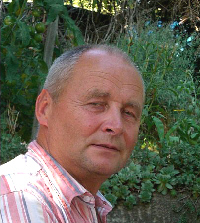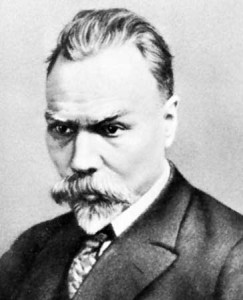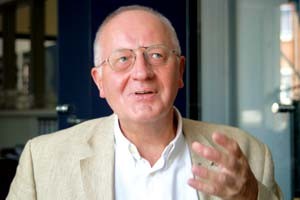orichalcum
Netolitzky, Friedrich
Friedrich (Fritz) Netolitzky (1875-1945) was an entomologist and a professor of botany, which he taught at a number of universities. However, he also had a keen interest in the mystery of Atlantis.
However, he also had a keen interest in the mystery of Atlantis.
Atlantisforschung notes(a) “The fact that F. Netolitzky’s Atlantological work was not completely forgotten after his death is mainly due to the historical geographer Richard Hennig (1874-1951), who wrote about him and his work in several of his books – above all in Das Rätsel der Atlantis (The Puzzle of Atlantis) (first publication 1925). There (pp. 21-24 ) we learn, for example, that Netolitzky ‘s considerations about an Iberian Atlantis of the Bronze Age inspired Adolf Schulten‘s research into Atlantis and Tartessos, who, according to Hennig, described them in individual details”
Netolitzky also provided an independent interpretation of the oriharukon (orichalcum) from Plato’sAtlantis account, which he identified as an artificial modification of white gold (known as Asem in ancient Egypt).
(a) Friedrich Netolitzky – Atlantisforschung.de (atlantisforschung-de.translate.goog)
Silvertsen, Harry & Redman, Stephen
Harry Silvertsen & Stephen Redman are the authors of two volumes which combined are over 1000 pages entitled Deluge: From Genesis to Atlantis[843] and Measurements of the Gods[844].
In broad terms, the books are an intense study of the origin of the mythology of the Great Flood as well as the history of metrology. Chapters 13 & 14 of Deluge are devoted to the story of Atlantis. Both Deluge and Measurements are available online(a)(e). While dealing with specifics such as the etymology of Atlantis, Orichalcum and the Pillars of Heracles, I think the authors’ unusual conclusion is best expressed in their own words;
“It is found then, that Plato’s Atlantis ultimately is no more than another rendition of the ‘Great Flood’ mythology, in this case, utilised by him to illustrate his importance in lawgiving. If the Ten Commandments were given to Adam and Eve instead of Moses then there would be a direct Biblical comparison. In essence, the story of Atlantis reinforces the analysis of the flood and creation legends as outlined in Deluge as in addition to the celestial events described therein, there is the devastation caused by known flood events at Sundaland to which his description decidedly points, some 11,000 years ago. This approximate date is dictated not merely by Plato’s ‘9,000 years’ for Atlantis’s demise, but also by his depiction of its City and its central mound [the World Mountain supporting the axis of the heavens] as symbolically representing the constellation of Hercules when Tau Hercules was the Pole Star.”
Sivertsen has published two slightly different condensed versions(c)(d) of their Atlantis theory, which explains that “Plato’s main target was not a location on earth but a specific region of the sky and equally precise date. His reference to “beyond, (or before) [dependent upon who’s translation one reads] the Pillars of Hercules ” is not a reference to a location on Earth. This refers to a time before the constellation Hercules appeared in its precessional location with the small star Tau Hercules at the celestial North Pole, an era when Hercules was still to the west of the polar region. Tau Hercules was pole star for the period of 1000 years from 8100BC to 7100BC. Correctly, some of those who have assumed that Plato meant an island on Earth have looked to the west for its location; however, they have had the devaluation only partially correct as they should have been looking to the heavens and not the Atlantic.”
By his own admission, Sivertsen concedes that their theory does not match all the details in Plato’s story – “Of course, while this short narrative explains the broad outline of the scheme devised by Plato there are details he used that are not explained here such as how he managed to have an educated Greece prior to Egypt or even why he wrote the tale in the first place.” In my view, there are many other flaws in Silversten’s interpretation of the Atlantis narrative. For example, the claim that “Atlantis, then, was not an island on Earth. Atlantis was the constellation Hercules. The Atlantians were the immigrants to Merhgarh (Pakistan) from Sundaland.”
>Silvertsen has also published a paper on the metrology of Stonehenge(f). In it he concluded that “there is a continuity of the same and related metrological units that have been in use since the early days of Indian development, long before Egypt had dreamt of a pyramid. The earliest identifiable time for the use of the measures was circa 7000 BC at Merhgarh India, now in Pakistan. The measures have had a provable continual use for at least 9000 years. Yet these units arrived at Merhgarh with people escaping flooding in Sundaland…
It is apparent that the units in use at Stonehenge circa 3000 BC were developed over 4,000 years before Stonehenge in a different part of the world; that some of the developed units are still in use today and have been in use since their inception many millennia ago. However, while more than sufficient evidence to support these statements can be found in Measurements of the Gods.”<
Silvertsen and Redman were guest authors on Graham Hancock’s website with a paper(b) entitled Science versus Religion.
(a) (99+) Deluge: from Genesis to Atlantis | Harry Sivertsen – Academia.edu
(b) https://grahamhancock.com/sivertsenh1/
(c) https://www.academia.edu/36251661/Atlantis_The_explanation
(d) (99+) (PDF) Atlantis- The location as denoted by Plato. | Harry Sivertsen – Academia.edu
(e) https://www.academia.edu/45065564/Historical_Metrology_Measurements_of_the_Gods
(f) https://www.academia.edu/41917594/The_Metrology_of_Stonehenge_2020 *
Nondik, Zatoz
Zatoz Nondik (1945- ) is a German researcher and founder of the Prehistoric Research Society  (FGUD). He supports the idea of a pole shift 13,000 years ago(a), based on the orientation of various ancient monuments such as Stonehenge, Tikal and Nazca, among others[1084]. He has also written a book about Plato’s ‘orichalcum’, From 2012 to Oreichalkos[841], in which he describes in detail how the orichalcum may be related to Japanese lacquer and suitable for coating walls as described in the Atlantis narrative(b).
(FGUD). He supports the idea of a pole shift 13,000 years ago(a), based on the orientation of various ancient monuments such as Stonehenge, Tikal and Nazca, among others[1084]. He has also written a book about Plato’s ‘orichalcum’, From 2012 to Oreichalkos[841], in which he describes in detail how the orichalcum may be related to Japanese lacquer and suitable for coating walls as described in the Atlantis narrative(b).
Nondik argues that to coat walls something other than a metal or molten amber was involved. However, I can’t help being reminded of the comments of Helen O’Clery who did note[494.52] that the ancients had mixed liquid amber with an oil to produce a form of paint.
*(a) See: https://web.archive.org/web/20130618122106/https://www.polverschiebung.de/index.html
(b) See: https://web.archive.org/web/20131126222154/https://polverschiebung.de/resultate_e.html*
Mining *
Mining as a human activity dates back many thousands of years in various parts of the world Recently, the earliest example of mining in the Americas was an iron oxide mine in Chile dating back to around 10,000 BC(a). However, metals, such as gold, silver, copper and tin were not the only material extracted in this way, pigments, flint and salt were also mined in ancient times. The silver mines of Lavrio in Greece employed 29,000 slaves at its peak.
In the Mediterranean itself, Cyprus was an important source of copper, giving the island its name. However, the most important mineral source was probably Sardinia, which for the Romans was one of the three most important sources of metals, along with Spain and Brittany. Although there was a limited amount of tin mined in the Mediterranean region, most came from Spain, Brittany as well as Devon and Cornwall.
Mining in Atlantis is recorded by Plato in Critias 114e where he states that there were many mines producing orichalcum as well as other metals. Mrs. Whishaw contended that the pre-Roman copper mines of Southern Spain was the source of the Atlantean orichalcum.
However, the most extensive ancient mines were probably those of the Upper Peninsula of Michigan where copper mining was carried on between 3000 and 1200 BC. It has been guesstimated that up to 1.5 billion pounds of the metal was extracted. It is further speculated that much of this was used to feed the Bronze Age needs of Europe and the Mediterranean(b)(c). This is hotly disputed by local archaeologists(d).
(a) Archaeologists uncover oldest mine in the Ame | EurekAlert! (archive.org) *
(b) https://www.grahamhancock.com/forum/WakefieldJS1.php
(c) https://www.superiorreading.com/copperhistory.html
(d) https://www.ramtops.co.uk/copper.html (offline Sept. 2017) (see Archive 2102)
Rivaud, Albert (L)
Albert Rivaud (1876-1955) was a French professor of philosophy and a classical scholar. Ivar Lissner commenting[725.158] on the unfinished nature of the trilogy of Plato’s Dialogues which included Timaeus and the incomplete Critias, quotes Rivaud as saying that what we have contains “not only ancient traditions but also the results of the latest contemporary research carried out during Plato’s lifetime.”
trilogy of Plato’s Dialogues which included Timaeus and the incomplete Critias, quotes Rivaud as saying that what we have contains “not only ancient traditions but also the results of the latest contemporary research carried out during Plato’s lifetime.”
Rivaud published a translation of the complete works of Plato in the early 1920’s. Volume 10 was Platon. Oeuvres complètes, Tome X.: Timèe, Critias. In it, according to James Bramwell[0195.91], he demonstrated that the term ‘orichalcum’ was known before Plato and not just an invention of his.
Later in his life Rivaud blotted his copybook with expressions of anti-Semitism and admiration for Hitler.
Tournier, Ivan
Ivan Tournier was regular contributor to the French journal Atlantis. In the Feb/Mar 1950 edition of Egerton Sykes’ Atlantean Research an English translation of an article of his entitled ‘The Orichalcum of the Atlanteans’ was published. In it he claims that orichalcum as described by Plato appears to be a specific metal rather than an alloy. However, he goes on to suggest that orichalcum or ‘mountain copper’ may have been an alloy of copper and beryllium. Tournier’s conclusion seems to have been influenced by the discovery in 1936 at Assuit in Upper Egypt of a type of scalpel made from such an alloy.
Assuit (Asyut) was the location of alleged appearances of the Virgin Mary at the Church of St.Mark in 2000 and 2001(a).
Bryusov, Valery
Valery Bryusov (1873-1924) was a Russian poet, dramatist and historian. In
1917 he wrote a paper on Atlantis in which he reviewed all the theories of the day. He believed that Atlantis had flourished at the end of the last Ice Age. Bryusov speculated that Plato’s orichalcum was in fact aluminium-bronze, an unlikely possibility considering the high temperatures needed to produce such an alloy. He also expressed a very sceptical view of the occult theories relating to Atlantis.
Bryusov was of the opinion that “Underlying all ancient cultures there must be a single influence”, which he believed to be Atlantis.
Nikolai Zhirov relates[0458.9] how on the recommendation of Maxim Gorky, Bryusov wrote a review of the historical and ethnical aspects of the Atlantis problem.
Ghembaza, Thérêse
Thérêse Ghembaza is a French researcher who has a website, in French and English, entitled The Great Enigmas of Antiquity(a) in which she discusses matters such as the Hyksos, the identity of Moses and the Kushites. The site also deals with her theory that Atlantis had been situated in Meroë on the Upper Nile, a theory that she developed in a number of other papers(c), which are certainly worth a read.
While at first sight this might be seen as a wild claim, Ghembaza offers a well reasoned theory which was presented to the 2nd Atlantis Conference held in Athens in 2008. She has imaginatively linked aspects of Meroitic geography and history with Plato’s story of Atlantis. For example, she identifies Tyrrhenia with Tyre in Lebanon and claims that Tyrrhenia in Italy was a later colony of Tyre! While some of her ideas are convincing I found others a little threadbare. Nevertheless, Ghembaza must be applauded for her efforts to construct a scientific explanation for the Atlantis narrative.
>Although Ghembaza quotes Plato extensively to support her Meroë hypothesis, she fails to explain how an Atlantean Meroë situated on the Upper Nile had territory in Southern Italy and northeast Africa (Tim 25a-b & Crit 114c), a distance of around 4,000 km. Equally difficult to account for is the fact that Meroë did not exist until sometime early in the 1st millennium BC in contrast to the middle of the 2nd millennium, considered a reasonably late date for the destruction of Atlantis. Add to that, the fact that Meroë was never submerged or created ‘shoals of mud’ leaving the credibility of Ghembaza’s Atlantis claims in tatters.<
In April 2015, Ghembaza offered a short paper(d) in support of identifying Bab-el-Mandeb as the location of the Pillars of Heracles.
Ghembaza has kindly drawn my attention to two quotations from Pliny the Elder and Ovid that offer possible explanations for Plato’s orichalcum (see Document 091011). The former refers to a Cypriot copper mixed with gold which gave a fiery colour and is called pyropus, while Ovid also refers to a cladding of pyropus, a term often translated as bronze. She also mentions auricupride(Cu3Au), an alloy that may be connected with orichalcum.
>A lecture outline by Ghembaza with a slideshow can be accessed online(e).<
(a) http://antiqua91.fr/index_en.html
(b) Hecataeus of Miletus‘ Periegesis 550 – 480 “now lost, but probably the main source of Plato and Eratosthenes”
(c) http://antiqua91.fr/atlantis_en.html
(d) See: Archive 2526
Slosman, Albert
Albert Slosman (1925-1981), was a French professor of mathematics and an expert in computer science, having helped  NASA with some of their programs. As a member of the French Resistance, he was captured and tortured by the Gestapo. Ironically, after the Liberation of France, he was unjustly accused of desertion and deported to Cameroon. While there, he heard of a local myth that told of a great cataclysm with which God had punished the wickedness of man and almost completely inundated a large continent in the Atlantic, where we now have Fernando Poo (Macias Nguema Biyogo). Afterwards Slosman travelled to Egypt and while there began to study hieroglyphics and also engaged in a serious investigation of the Denderah Zodiac.
NASA with some of their programs. As a member of the French Resistance, he was captured and tortured by the Gestapo. Ironically, after the Liberation of France, he was unjustly accused of desertion and deported to Cameroon. While there, he heard of a local myth that told of a great cataclysm with which God had punished the wickedness of man and almost completely inundated a large continent in the Atlantic, where we now have Fernando Poo (Macias Nguema Biyogo). Afterwards Slosman travelled to Egypt and while there began to study hieroglyphics and also engaged in a serious investigation of the Denderah Zodiac.
While travelling in the Moroccan Middle Atlas Mountains, near Midelt, he was interested in the metals found there thinking that there was a connection between Moroccan oricalcita, a copper derivative, and Plato’s orichalcum!
His Egyptian studies led him to conclude that (i) Atlantis existed in the Atlantic and that after its submergence survivors migrated across North Africa and eventually became settled in Egypt and that (ii) the Denderah Zodiac indicated a July 27th 9792 BC date for this destruction of Atlantis[0550]! He managed to publish ten books, two of which related to Atlantis, before his tragic death following a fall in 1981. Unfortunately, many more publications were still at various stages of development at the time of his death.
Slosman has a number of devotees, one of whom is Emilio Bourgon, who published a paper in support of Slosman. An English machine translation of this is available in the Atlantipedia Archives(a).
Wolter Smit, on his website, appears to accept Slosman’s interpretation of the Denderah Zodiac regarding the destruction of Atlantis. Likewise, Patrick Geryl and Gino Ratinckx were so impressed by Slosman’s interpretation that they incorporated parts of it into their book[066] on an impending catastrophe in 2012. Carlos Barceló is also a fan of Slosman’s interpretation.
More about Slosman can be found at the following Spanish language website(a).
(a) https://www.bibliotecapleyades.net/egipto/egipto_remotosorigenes.htm
(b) See: Archive 2399
NOTE: Juan Garcia Atienza also wrote a book entitled Los Supervivientes de la Atlantida.
Schoppe, Christian & Siegfried
Christian & Siegfried Schoppe are a father and son team of German researchers, who firmly assert that Atlantis was located in the Black Sea. More specifically they suggest that Snake Island(b) situated 35 km east of the Danube Delta, was the location of the Atlantean capital. Snake Island has also been referred to in a Russian website(c) that discusses a Black Sea Atlantis. It includes a number of video clips with Russian dialogue.
Snake Island has also been adopted by George K. Weller as the location of Atlantis(h).
Their contention is that before 5500 BC there was a great plain in the northwest of the area, now occupied by the Black Sea, which was then a much smaller freshwater lake. Atlantis in their view was situated on what was formerly the shore of this lake. The Schoppe’s echo the
view of Ryan and Pitman who were probably the first in 1998, to advance the idea that around 5500 BC the barrier at today’s Bosporus broke open due to the rising world sea levels and raised the level of the Black Sea, flooding a huge area of cultivated land, an event that lay behind the story of Noah’s Flood.
The Schoppes, on the other hand, identify this flooding of the Black Sea with the flooding of Atlantis and maintain that the Pillars of Heracles are located at the Strait of Bosporus. They further suggest that the Orichalcum mentioned by Plato was in fact obsidian that used to be a cash-equivalent at that time and was replaced by the spondylus shell around 5500 BC. This geocatastrophic event, according to the Schoppes, led to the Neolithic diaspora in Europe which also began around 5500 BC.>They also claim that included in that movement of refugees from Atlantis were the Vinca people(i).<
They also claim to have identified the location of the ten kingdoms of the Atlantean empire through an investigation of placenames for both meaning and sound. The theories of the Schoppe’s are contained in their book, Atlantis und die Sintflut [186] and outlined on their website(a).
In 2005, the Schoppes offered their theory to the Atlantis Conference on Milos and published their presentation online(g).
In June 2015, Siegfried Schoppe offered the latest paper in support of their Black Sea location for Atlantis(d) for publication on the Atlantipedia.ie website, as well as a shorter note, also in support of their theory(e).
In a short paper(f), the Schoppes also compared the effects of the fall of Rome with the consequences of the demise of Atlantis.
The Atlantis theory of the Schoppes, along with many others matches many of the clues offered by Plato, but for me, I find it difficult to understand how an Atlantis situated east of Athens and north of Egypt in the Black Sea could attack them from the west! In fact, what Plato said was that the invasion came from the Atlantic Sea (pelagos). Although there is some disagreement about the location of this Atlantic Sea, all candidates proposed so far are west of both Athens, Egypt and the Black Sea (Tim.24e & Crit.114c).
>Then, a few years ago the Schoppes suddenly and without explanation ‘closed shop’ and removed all their weblinks!<
(a) https://web.archive.org/web/20190830053312/https://www.black-sea-atlantis.com/black-sea-atlantis/
(b) https://en.wikipedia.org/wiki/Snake_Island_(Black_Sea)
(c) https://survincity.com/2010/04/conspiracy-theory-black-sea-atlantis-the-case-of/ (link broken Dec.2020)
(d) See: Archive 5098 (German)
(e) See: Archive 5099 (English)
(f) See: Archive 2873 (German/English)
(g) https://web.archive.org/web/20190819053202/https://www.black-sea-atlantis.com/milos.pdf





